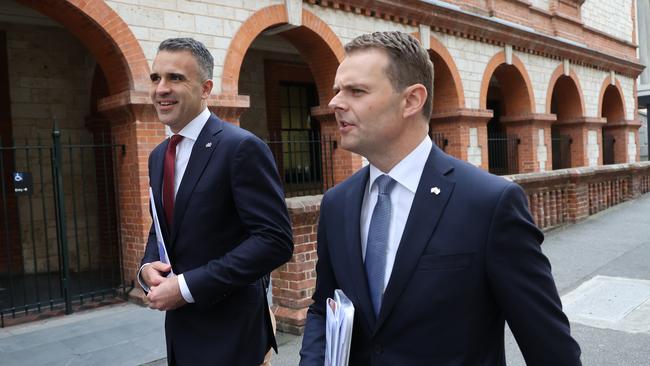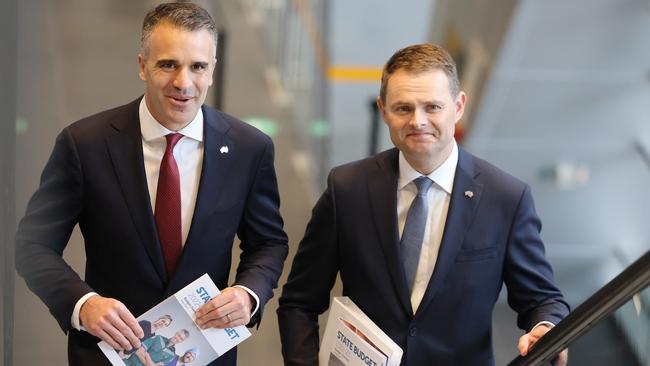SA Budget 2022 analysis: Will Labor’s debut budget stand the test of time?
Labor delivers on its promises in health and education, but this budget is full of economic uncertainty as rising interest rates and inflation batter government costs, writes Paul Starick.
Opinion
Don't miss out on the headlines from Opinion. Followed categories will be added to My News.
Deep economic uncertainty is engulfing a budget that delivers Labor’s “plan for the future” – focused on health and education – as rising interest rates and inflation batter household and government costs.
More than $1.2bn a year will be needed to service government interest costs beyond 2024-25 and this will hit $780m next financial year.
Government debt is forecast to rise to $33.862bn by 2025-26 – the end of the forward estimates – and would have surged to an astonishing $65bn if spending had continued at levels of recent years.
Inflation is forecast to hit five per cent next financial year and Treasury is just as in the dark as everyone else about movements after that.
“While households and businesses are facing huge additional pressures on their finances, the government confronts not just higher costs for goods and services but wage pressures and rapid escalation in infrastructure delivery costs as well,” Treasurer Stephen Mullighan said in his budget speech.
“And the government does so with a balance sheet burdened with record debt levels, operating deficits and the largest infrastructure program in the state’s history still to deliver.”

The full impact of the $9.9bn North-South Rd road corridor and $2bn-plus Women’s and Children’s Hospital projects has not been detailed in this budget, because design and construction plans are still being prepared. Costs are almost certain to rise, though, considering the rapid march of inflation and interest rates.
Mr Mullighan has delivered on the tricky task of allocating funds to Labor’s $3.1bn in election promises, outlined just two days before the poll.
Some are still to be determined precisely, particularly the $593m hydrogen power plant slated for Whyalla. This cost has been pegged by Labor’s election policy and has yet to go to market for construction and operation.
Likewise, money allocated to start a Flinders Medical Centre upgrade and build a new Mount Barker hospital is clearly incomplete, in that it will not entirely fund both projects.

Mr Mullighan also has dialled back Labor’s vow to impose a blanket 1.7 per cent efficiency dividend to slash public sector spending – other than for frontline service agencies – but retained a measure to cut executive numbers.
Instead, agency chief executives will be given “flexibility to deliver operating efficiencies in a manner that best suits the needs of the agency”. It remains to be seen whether these cuts will be delivered or whether the agencies will find ways to escape them.
Budget papers show general government sector employment numbers growing from 86,945 this year to 89,066 by 2026. This includes the health workforce whose enthusiastic support for more funding helped propel Labor to power.
This is a budget for its times – implementing Labor’s promises, recognising debt and leaving some wary provision for the future.





